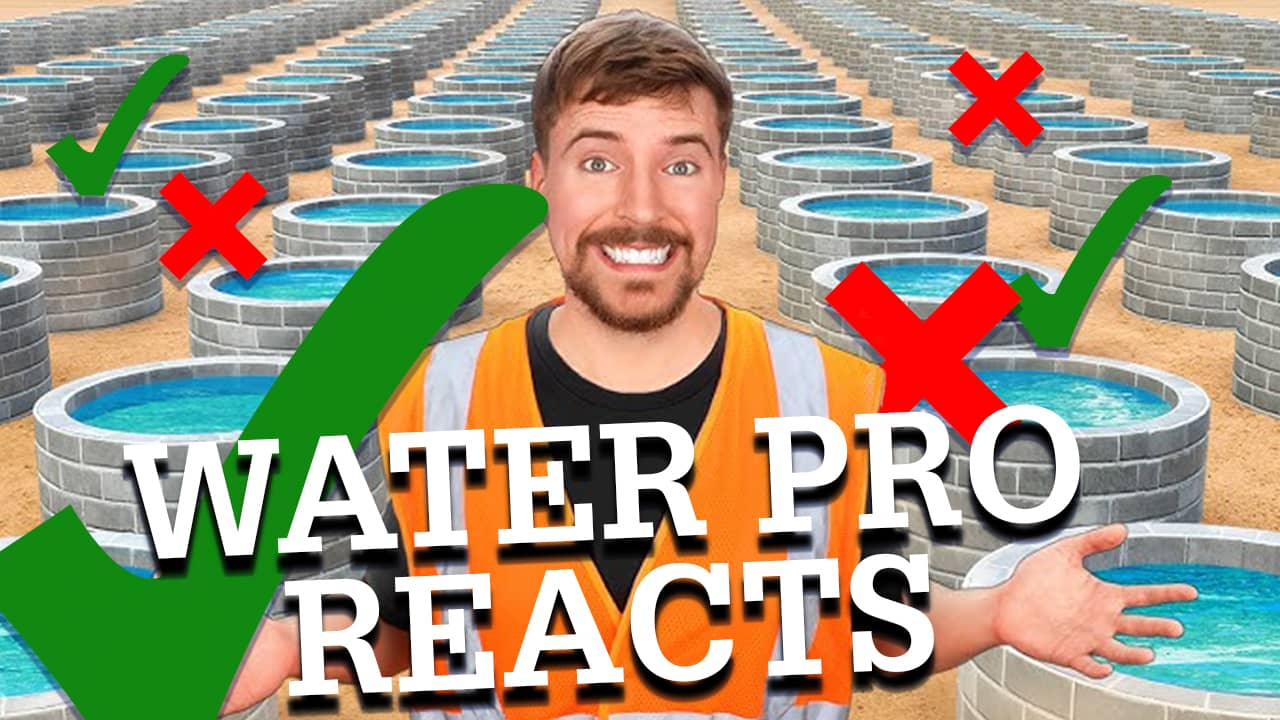MrBeast just shouted out to his 208 million YouTube subscribers to step in and help the World achieve the UN SDG 6. Not only did he start raising funds for it, but he also showed the way by drilling 100 wells in Sub-Saharan Africa and enabling 500’000 people to get access to safe drinking water. Yet, to drag tens of millions of eyeballs to watch his endeavors, he had to take some shortcuts.
I’m blessed with a much smaller following, so here’s my deeper dive ⬇️
Table of contents
MrBeast joins the Safe Drinking Water Cause
MrBeast released a video on Sunday where he’s drilling 100 wells in Africa to bring safe drinking water to struggling communities. I watched it with my daughters, we donated to his fundraising, I shared the video around and was ecstatic that Jimmy stepped into the safe water cause and got tens of millions of people interested in it.
Yet because he’s MrBeast and can’t afford one second of wasted time in his content, he may have left important sections of the story out of his video, so here are 6 topics that I believe deserve additional attention, starting with the moment where we get a close up of a pump his team installed.
Problem #1 – Pumps expected Lifetime
As of today, there are an estimated 300’000 abandoned pumps in Africa, representing 5 billion dollars in wasted investment, and the blame goes greatly to the NGOs that installed them for two reasons.
The “domestic purchasing” Idea that looks god but… doesn’t work
First, many Western world charities have a domestic purchasing policy, which they use as an argument to collect donations.
For instance, until 2006, the US Agency for International Development’s website proudly boasted how “the principal beneficiary of America’s foreign assistance programs had always been the United States.”
It even goes beyond: for long, US law required USAID to use American contractors for most development works.
As a result, 80% of contracts and grants went directly to American firms. You may wonder, what’s wrong with that, after all? It sounds like a clever use of a virtuous cycle. You support your local economy while doing good!

Spare parts management and maintenance become cumbersome (at best)
But here’s the catch. Even the best piece of American furniture will eventually break at some point in time. And when local communities need to repair, they will also have to import spare parts from America – as they don’t use the same standards as the US – which will become an unbearable cost. And as a result, the pump will be abandoned.
In his video, MrBeast boldly claims that the pumps he installed “will last 30 years.” Statistics and studies say something else: the average pump deployed in Sub-Saharan Africa lasts less than five years. For the spare parts reason I just mentioned, but not only.
Transfer of ownership and knowledge
The second part of the story is that maintenance is a skill that requires a knowledge transfer, another step that often goes missing in the approach where a foreign body comes and installs a turnkey solution.
It’s all about giving the local community a sense of ownership over the newly installed infrastructure, along with the tools and knowledge to care for it over time.
Looking at MrBeast’s footage of the pumps his team installed frame by frame, my gut feeling is that it’s not your average pump; it clearly looks like a Tier I piece of furniture, which shall come with a solid expected lifetime. Clear kudos to them for that! Yet when Pump Aid’s specially designed Elephant Pump and Blue Pump claim a 15-year expected lifetime, I’d still believe Jimmy’s optimistic with his 30 years.
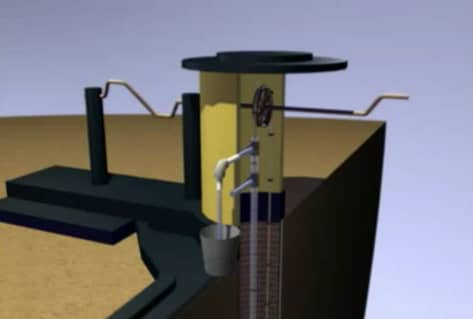
Praise to MrBeast #1 – Dangerous Waters
Where MrBeast hits the nail on its head, though, is when he highlights how dramatic the risks associated with bad water are. He’s got a very elegant way to explain how far too many lives are cut short because of waterborne diseases: by the numbers and according to UNICEF, 3.5 million people lose their lives every year because of a lack of access to safe drinking water, and that’s an aggravated risk for children under five.
All year long, every 86 seconds, a child under five dies from one of these said waterborne diseases.

To even figure out humanity’s fine with that is beyond my understanding.
MrBeast shows the risks associated with Surface Water
As the video shows, with the highly turbid and colored water found in the river next to the school in Kenya, the main risk doesn’t lie in the brown taint but in the bacteria – especially the coliforms – that are found inside.
These bacteria stem and develop from waters that are contaminated with sewage and fecal matter, something that’s pretty common as 3.6 billion people around the globe still lack access to adequate sanitation, often in the same places where safe drinking water goes missing. And anyways, raw surface water is unfortunately nearly never drinkable anywhere around the globe; hence, MrBeast’s approach to drilling wells in underground aquifers is the absolute right thing to do.
But. Several times across the video, Jimmy mentions the “unlimited clean water” that’s provided to local communities. Well, I see what he means by that, but that’s not really true.
Problem #2 – There’s no Unlimited Clean Water
There are two types of underground aquifers. Fossil ones that – a little like an oil deposit – exist and would be an untapped resource until someone drills into them, and renewable ones that are somewhat connected to surface water and replenished within the Water Cycle.
In the case of a fossil aquifer, the misused word by Jimmy would be “unlimited.” These water bodies clearly are not unlimited, and we’re too strongly tapping into and relying upon these nowadays. As proof of that over-tapping, satellite observations of Earth demonstrated a change in the planet’s gravity field, induced by the fact that we’re displacing large quantities of water – hence also weight – when we overexploit them.

The biggest problem here is that eventually, these fossil sources will run dry, and we’ll have to look for water elsewhere.
MrBeast’s wells probably drill in renewable aquifers. But are they clean?
Now, in the case of MrBeast’s projects, I doubt it would be fossil aquifers. Sub-Saharan Africa has mighty rivers, very strong seasonal rain events and high replenishment rates, so I would believe those underground water bodies to be connected to the surface one, and hence renewed. So Jimmy’s right: it’s unlimited water. But is it safe?
That’s a question of depth and velocities. The reason why, groundwater is of better quality than surface water, is that Earth is running a filtration on surface water as it percolates through layers of sediments. That’s efficient in removing many problematic contaminants and is actually the natural version of the sand filters we’re using in water treatment plants. That’s where depth first plays a role: the closer you are to the surface, the less Earth has room to do its part and clean the water from fecal matter and nitrates.
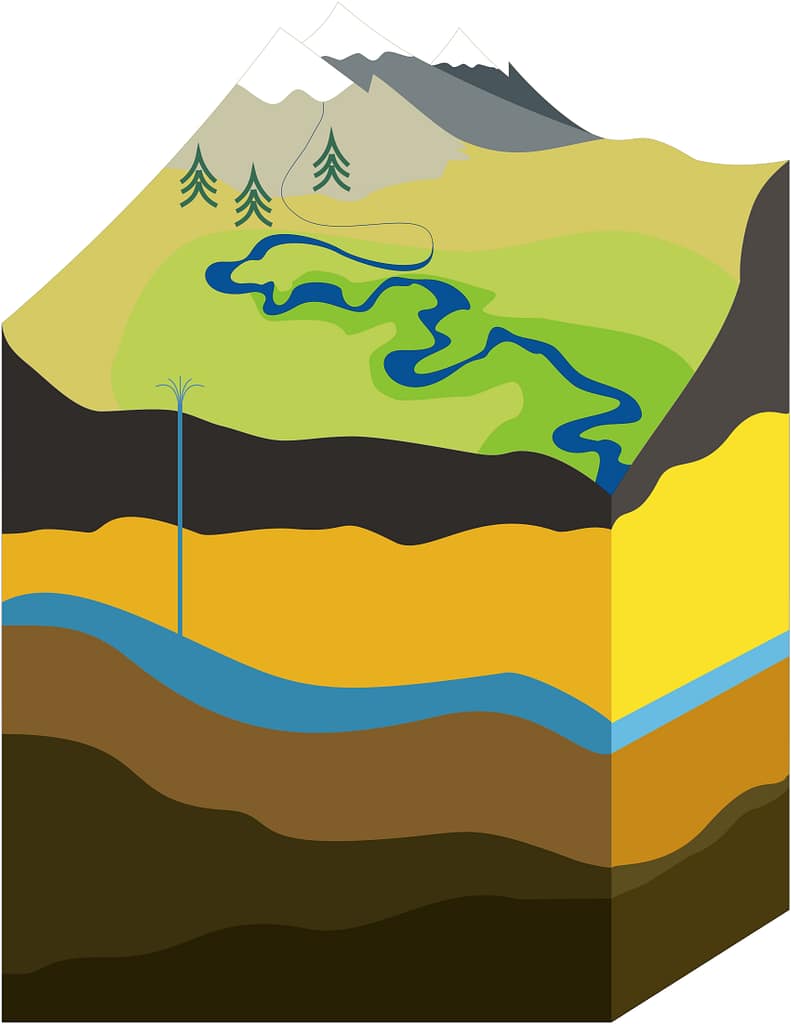
The more Wells in the same Aquifer, the higher the Risk
But even if you go deeper, if you dig too many wells in the same aquifer, you may still risk steeply increasing the velocity of water flowing through the layers of Earth, which also means that the contact time between these filtering layers and contaminated water reduces, eventually up to a point where cleaning isn’t sufficient anymore.
Not to mention that some contaminants would still need additional treatment to be removed, as deeper aquifers often have heavy metals or minerals in too high concentrations, but I’m pretty sure Jimm’ys team would have run the quality analyses to ensure that’s not too much of a risk where they drilled.
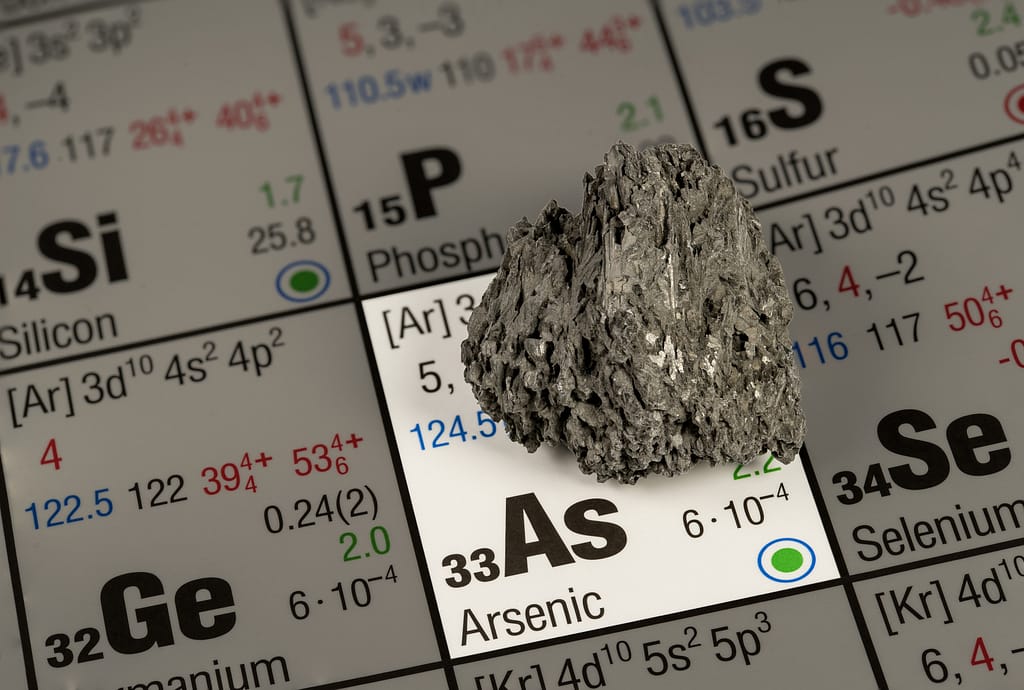
So bottom line: “unlimited safe water” doesn’t exist; I would believe the “unlimited” part to be almost true in that region, yet the “safe” is an aspect to monitor closely.
Praise to MrBeast #2 – The Long Road to Water
One thing MrBeast is incredibly right though – and I really praise his work in making it visual in the video – is that collecting water, when you don’t have a safe and reliable access to it, takes a lot of time and effort in a day, which places a terrible burden on local communities and especially women.
In the video, Jimmy takes the walk across the mountain with the school kids, a journey they have to do twice a day every day to collect water. Depending on how remote your area is, and where the actual source of water is located, that task can take several hours in a day, and up to half of the day. Let’s state the obvious: that’s a time when populations don’t do anything else, like work or education, but also an additional health risk, as Jimmy shows with the heavy loads it represents to carry two water containers over a mountain.
It is very expensive to be poor
And what if you can’t afford to spend two hours a day to go collect water that’s even of questionable quality? Well, you can instead go for tanker water, a service that’s often offered in urban and suburban areas in Sub-Saharan Africa. Yet the catch is that water delivered that way is, on average, 10 to 15 times more expensive than tap water, leading some of the poorest people on Earth to spend 20 percent of their income on water. For reference, if you’re blessed like me to be a resident of an OECD country, you’re spending around 0.5% of your income on tap water. Relatively speaking, that’s 40 times less.
Summing up all these burdens – the time spent collecting water and not a truly productive task, the additional health risk, the absurd price premium that shows how expensive it is to be poor, you obtain what the founders of Water.org defined as the “coping costs” of water. And every year, around the World, the amount of money people pour into these coping costs is 300 billion dollars.
2.2 billion people without Water is an economic non-sense
Wanna hear another absurd number here? The UN estimates it would cost 114 billion dollars a year to provide everybody on Earth with safe drinking water. Yet, we still prefer to let the poorest people on the planet spend 300 billion dollars a year instead. Crazy, stupid, and a great thank you to MrBeast for making that absurdity so visual!
(shameless plug: that’s also what I covered in my TED Talk on the Value of your Poop)
Problem #3 – Magnitude
Something Jimmy didn’t get quite right, though, is the orders of magnitude.
Opening the video, MrBeast explains how these 100 wells his team is drilling will supply water to nearly half a million people. Later on, he’s even more explicit as to how much water a well is outputting: 3600 gallons a day.
Sorry, Jimmy, but for my mental sanity, I need to convert it back to civilized units; 3600 gallons equals 13627 liters a day.
MrBeast’s Well will supply Drinking Water (great!) but not more
So, if 100 wells provide water to 500’000 people, that means that each well is designed for 5000 people. 13627 liters a day, divided by 5000 people, makes 2.7 liters per person and per day. The usual health advice for women is to drink 2 liters a day, and for men, 2.5 liters a day. So, thanks to Beast Philanthropy, these communities will have their drinking water needs covered, and that’s awesome! But it won’t be nearly enough for laundry, showering – which is suggested by B-roll – or agricultural uses.
Generally speaking, the World Health Organization and the United Nations convene to define the human right to safe freshwater for drinking, cooking, and cleaning, to be 50 liters per day and per person. And that’s the bottom of the range; they explicitly say 50-100 liters, although a city enters a “Day Zero” event when it goes under 50, so I’d take that as a reference.
We only drink 4% of our Minimum Daily Allowance
I’m not saying Jimmy is lying here at all, for instance, when he shows this well that’s apparently drilled for agricultural purposes. But there as well, I’m pretty sure the water goes to feeding the livestock, not irrigating the crops.
In a nutshell, these 100 wells will provide half a million people with the water they need to cover their drinking needs all year long, not more, and that’s already a massive improvement from their incumbent situation.
Praise to MrBeast #3 – Impact
The last element of the video I’d like to highlight is this sentence MrBeast has, toward the end of the video, when he says:
I know it’s weird that a YouTuber has to do all this stuff, but someone’s got to do it, and if no one else is, we’re gonna do it.
MrBeast in his 100 Wells video
Jimmy is almost apologizing and justifying himself for doing something that’s truly awesome. Yet he says it right earlier in the video:
You would think that having an effect of this magnitude would require the resources and funding of a large government. But that’s not true. Solving this problem is possible. And something humanity should all be putting effort in to fix.
MrBeast in his 100 Wells video
And luckily so.
Governments repeatedly failed to provide Water for All
Governments and international institutions have a track record of failing to enforce these population’s right to safe water, and it’s awesome to see MrBeast step in.
If that sounds weird to some, it’s probably because they don’t know who’s the person who singlehandedly did the most to improve access to water over the past decade Worldwide, together with his co-founder Gary White at Water.org. Would you guess who I’m referring to? Well, you might have seen him in Saving Private Ryan, or in the well-titled “Rainmaker” or simply know him as Jason Bourne; indeed, you reckoned it right, it’s Matt Damon.


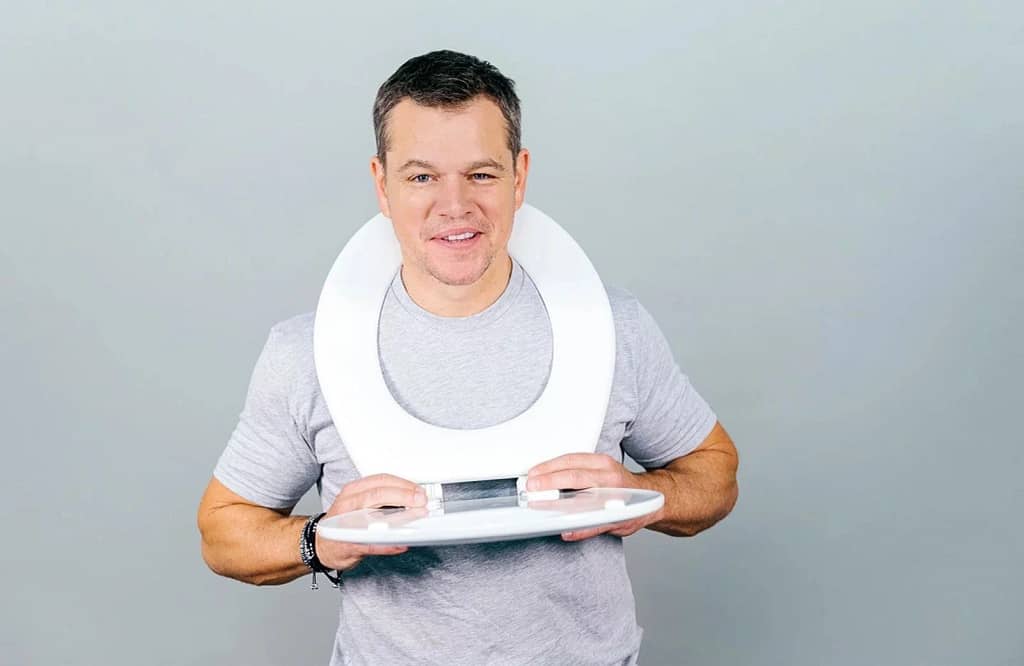

Since 2009, Water.org has enabled over 50 million people to gain sustainable access to safe water, especially through their WaterCredit initiative.
MrBeast is following Matt Damon’s Water Path
That’s the path MrBeast is following, and he’s started with a bang and half a million lives changed. I’m no expert, but from what I read, Beast Philanthropy is praised to be a serious player in all endeavors it’s taking on, which is why, as I mentioned in the opening, we’ve taken a family decision with my daughters to participate in the fundraising.
MrBeast’s 100 Wells – My Bottom Line
I raised some questions about MrBeast’s approach in this deep dive, yet I genuinely believe that all my “concerns” have been taken care of by Jimmy’s team – it just wasn’t a fit for his 208 million subscribers to go in the bit more details I went here today. But my last video did 30 views, so, I can afford to be boring.
MrBeast also provided anyone with a contact to raise questions in his own video, so I sure emailed his team to check if they’d be keen to share more details on their project, of course, because I’d be super happy to endorse their approach toward my own contacts within the investment fund/philanthropy world, but also sub-saharan water utilities and water companies.
They haven’t responded yet, but that’s entirely normal given the success of their video and how small of a confetti I am in that ocean of queries they probably received – if they reach back, I’ll sure make an update video to follow track, if you don’t want to miss out or if what I shared today was genuinely interesting to you, I discuss water topics on a weekly basis, consider subscribing wherever fits you best (Apple Podcast, Spotify, YouTube…)

